Joint Prisoner of War (POW) and Missing in action (MIA) accounting command, aka JPAC. A mouthful of a title conveniently summed up in a useful military acronym.
JPAC has the mission of recovering, identifying, and returning the remains of unnamed soldiers from past wars.
More than 83,000 Americans are classified as missing in action from World War II, the Korean War, the Cold War, the Vietnam War and the 1991 Gulf War. So, the burden is great for hundreds on Department of Defense personnel charged with the duty of identifying the remains

The ceremonies held for the returning of deceased soldiers.
Forensic Anthropologists are held in high regard for their importance in missions like these.
The scientists are an absolute necessity, they have the training skills to identify bodies off of almost no information, except the bodies themselves.
They have to work with very limited information, sometimes not even full bodies. But yet, they are still able to compare the information they have to records of the military.
Not only are they are able to bring closure to hurting families, by bringing lost soldiers home, but they are able to find out if soldiers are still living.
The military didn't start using identifying tags until 1912, already two years into WWI.
And even then, the tags were not a perfected identification tool until the late 1950's
Now, the military has more exact records to keep track of our modern day soldiers. Such as dog tags, DNA, body records (height, weight, jaw x-rays, etc.)
http://www.jpac.pacom.mil/index.php?page=home&size=100&ind=0
http://en.wikipedia.org/wiki/Missing_in_action
http://www.dtic.mil/dpmo/
http://en.wikipedia.org/wiki/World_War_I
http://www.historyplace.com/unitedstates/vietnam/

Forensics anthropologist gently lifts one of five skulls unearthed from a mass grave in the Chungui District of Peru.
After much delay, forensic workers finally begin to un-earth victims of a brutal dispute in the Chungui District of Peru.
The exhumation of the bodies of the the Peruvian dispute between the countries military forces and the Shining Path rebel groups is long over due, and will be one of the largest exhumations to date.
Forensic anthropologists are steadily working to put names to the thousands of bodies that they are uncovering, many of them children and women. The workers are collecting data from surviving relations of the victims to create a database, all in the hopes of identifying the remains.
Valetina Casa is a thirty six year old farmer, his mother and father were slain during the dispute. Casa aided anthropologists during their works in the dangerous areas known as the Dog ears in Peru, because he believed that they were exhuming his mothers body.
Forensic anthropologists are steadily working to put names to the thousands of bodies that they are uncovering, many of them children and women. The workers are collecting data from surviving relations of the victims to create a database, all in the hopes of identifying the remains.
Long over due justice may be coming to the families of the victims who were brutally slain without any sort of trial, or a majority of the time, cause.
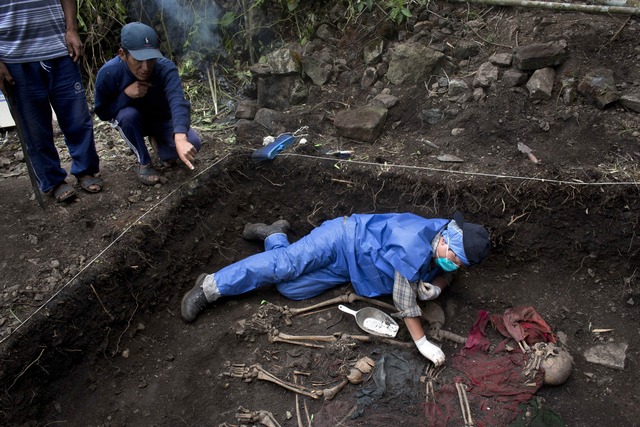
A man points to the mass grave where his mother and sister were buried as a forensics worker unearths the remains.
Sources:
http://www.wane.com/news/international/biggest-exhumation-underway-from-peru-conflict_11839793
http://en.wikipedia.org/wiki/Shining_Path
http://www.usatoday.com/story/news/world/2013/07/26/peru-exhumed-bodies/2590965/
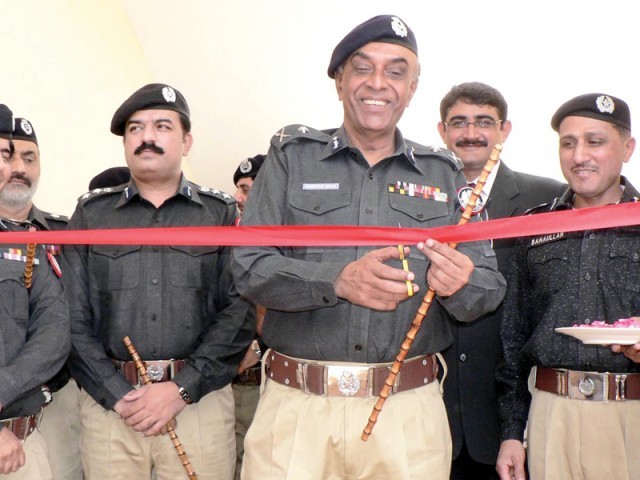
Police welcome the opening of a forensics center in Pakistan.
In Karachi, Pakistan the forensics science laboratory(F.S.L) of the police department is seriously lacking funds. And in the wake of multiple bombing within the city the demand for the F.S.L has grown exponentially.
Luckily the the city's police department has stepped up to and is training 90 personnel to assist in handling and examination of forensic evidence.
"Before this training, it was very difficult for us to do all the work ourselves,” One of the districts police chief Munir Shaikh, who is also the forensic division’s former chief, told The Express Tribune. “We decided to train the existing police personnel of every district in Karachi to approach the crime scenes on time and collect evidence.”
Now, with the added personnel the six districts in the city will have their own groups to collect evidence, sort it, and relay it on to be analyzed .
This year alone nearly 8,000 cases have been referred to the lab, so the demand to bring the lab up to modern day operating expectancies was great.
The F.S.L is still striving to improve. They even plan to bring in foreign delegates to provide information on advanced techniques and technologies according to the senior officer of the forensics division.
The new trainees relise the importance of what they are doing, and seem to be optomistic about the whole circumstances. Especially after the training provides a .20 hourly pay raise.
“Practice makes perfect and we are learning day-by-day because we were trained only for 15 days,” said a trained forensic district police officer, Aslam. “Sometimes, we call our trainers to get help but we are hopeful that we will do without them if we continue with this practice.”
Karachi is setting an example for other countries to improve forensic science fields. If more countries start to follow suit, it would lead to a scientific revolution.
Sources:
http://beta.dawn.com/news/260330/karachi-forensic-science-laboratory-needs-upgrading
http://tribune.com.pk/story/639767/science-and-crime-karachi-gets-90-more-forensic-experts/
http://dawn.com/news/1058047/ttp-claims-responsibility-for-twin-bomb-attacks-in-karachi
http://en.wikipedia.org/wiki/Karachi
http://tribune.com.pk/story/168834/forensic-science-police-celebrate-lab-inauguration/
Forensics is gained a new sense of appreciation in recent days. A team of forensic scientists from Dundee, Scotland have been awarded the Queens anniversary prize for higher education.
The prize is awarded in the U.K to places of advanced educations for noteworthy advancements in the science, technology, engineering, and medical fields (S.T.E.M) .
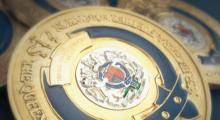
Queen's Anniversary Prize for Higher Education
The Center for Anatomy and Human Identification (C.A.H.I.D) was awarded the prize for their work in craniofacial identification and forensic facial reconstruction for the identification of the living and the dead, the latter more recently including King Richard III.
CAHID, which is headed by Professor Sue Black, is one of the world’s foremost institutions for the study and application of human anatomy, forensic human identification, disaster victim identification and forensic and medical art.
Professor Black said: “This is a tremendous honour and testament to the hard work of all the staff, and indeed the students, who have worked in the Centre.
The team is one of the best inter nationally for the identification of human remains, they have done so much to aid in the identification of human remains in places such the Asian tsunami and the London Sharm-El-Sheikh Bombings. They are unsurpassed in disaster victim identification methods and training.
Sources:
http://news.stv.tv/tayside/249779-dundee-university-forensic-team-awarded-queens-anniversary-prize/
http://cahid.dundee.ac.uk/
http://www.royalanniversarytrust.org.uk/
A Dundee, Scotland university was commissioned by the Richard III Society to create a accurate model of the dead ruler.
The model was made using a 3-D printing technique called stereo-lithography. And artists ,lead by Caroline Wilkinson.
Wilkinson explained: “Richard III is someone I am familiar with as a historical figure and I am from Yorkshire myself so I understand the significance of him. There was a lot of information about this recent archaeological investigation I did not know about so there was a lot of confidentiality surrounding the investigation and they only told us what we needed to know.”
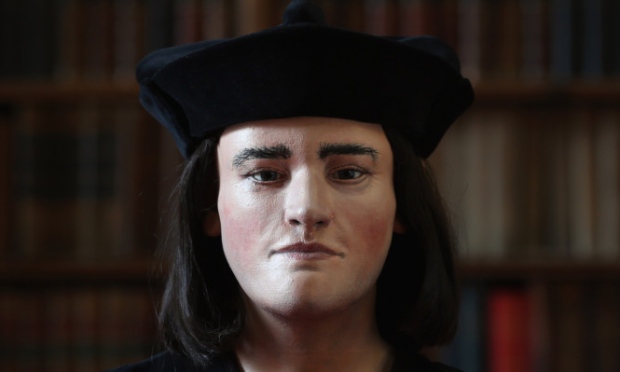
Model of Richard III
More on the excavation of the King's remains here:
http://www.thecourier.co.uk/news/education/dundee-university-helps-bring-king-richard-iii-back-from-the-dead-1.67769
Sources:
http://www.thecourier.co.uk/news/uk/dundee-university-s-facial-reconstruction-of-richard-iii-goes-on-public-display-1.94093
http://www.thecourier.co.uk/news/education/dundee-university-helps-bring-king-richard-iii-back-from-the-dead-1.67769
_




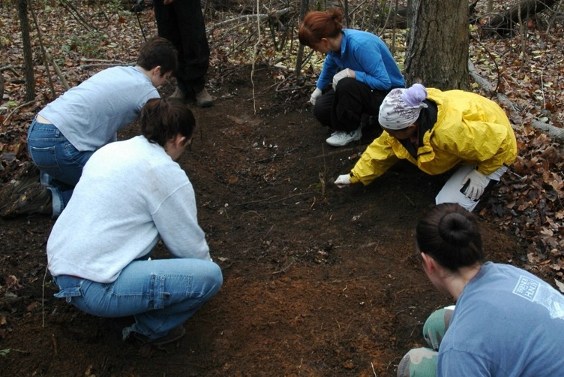





 RSS Feed
RSS Feed